The first thing to greet me as I arrived in St. Croix was the light. Surrounded by the dark blackness of the ocean, a tiny island of light slowly came into view as the plane approached the airport. As the brightness grew in the night, so too did my excitement. This was it. The start of my adventures in the field for the National Park Service.
After getting off the plane and claiming my baggage, I was greeted by a bubbly Tessa Code, a Biological Science Technician for Buck Island Reef National Monument. As it was late, we kept the chit chatting to a minimum. She handed me the keys to the government vehicle I was borrowing for the week and reminded me that they drive on the left side of the road here in the US Virgin Islands. (For those of you wondering, their driver’s seats are on the left side of the car like in the states.)
So here I was in a new place, with an unfamiliar car, at night, slightly tired, learning to drive on the opposite side of the road. My what a challenge that was! Thankfully, I was just following Tessa’s car in front of me to Park Service housing, which helped me out tremendously. Even still, I managed to make a few turns to the wrong side of the road. Yet, I must say, by the end of the week, I was really starting to get the hang of and even enjoy driving on the left side of the road.
Monday, July 4th, was a holiday so I had the day off. I made plans with my college friend who grew up on island, Cassandra, to see the Frederiksted fireworks. Beforehand, she excitedly invited me over to her house for a holiday barbeque her mom was hosting for friends and neighbors, as I was her first stateside friend to come visit her home and her island. Cassandra and her family are 9th generation Cruzans and I loved listening to their stories and learning about the culture and history of St. Croix from them. We all sat around the table talking and laughing, while enjoying a delicious buffet with citrus pasta salad, escabeche, baked macaroni and cheese, mahi mahi, and steak.
That night, we ventured down to Frederiksted to watch the fireworks. In the square, local food vendors were set up along the street selling conch pates, fresh juices, and Johnny cakes (think a lighter, fluffier, more delicious donut). Unfortunately, just as we arrived, the weather turned for the worst and it began pouring rain. For a bit there, we all thought that the fireworks would be cancelled, but just as the rain stopped a loud crash echoed in the air. The reflections on the surface of the ocean and the sound of the waves took the display to a magical level. Perhaps my favourite fireworks display of all time!
The following morning I stopped by Park Headquarters to meet up with Zandy Hillis-Starr, Liz Whitcher, and Robby Fidler. Together, we all sat down to discuss our plans for the week with Zandy, Chief of Resources Management for the park. Liz is a graduate student from Florida Institute of Technology who is heading a study to assess coral accretion on the reef at Buck Island as part of a larger collaborative investigation with the NPS and the USGS. The plan for the week was that Liz, Robby, and I were going to be returning to sites to collect sediment traps and perform various transect surveys on the reef. With the go-ahead from Zandy, we drove over to Green Cay Marina, where we met up with Jeff Gay, our boat operator for the week.
After loading the boat with tanks and gear, we were out on the water on our way to Buck Island before 900. On our way over, Liz explained to Robby and I the exact plan for our dives. Each site consists of three sites – the fore reef, the reef crest, and the back reef. At each site of all 18 random locations, we needed to collect 6-month-old sediment traps and conduct five transect surveys – parrotfish (x2), sponge, urchin, and photographic. That’s a lot to do underwater!
Each dive went the same. “80 feet…50…30, 20, 10.” The engines kicked into reverse before being shut off abruptly. “Go! Go! Go!” Jeff Gay shouted at us as we entered into the water for our dive. As the photographic and parrotfish surveys took longer and required advanced-level identification, my job was to perform the sponge and urchin surveys. When we hit the bottom, each of us set up our transects and began our work.

Hovering above the quadrat, I record the size and species of bioeroding sponges at multiple points along the transect.

Swimming over a large colony of brain coral, Liz takes hundreds of pictures along the transect in order to produce a 3D photogrammetry model of the reef which can be used to get a more precise estimate of coral cover.
When I swam the 10 meters on the first pass, I would peek in, around, and under the coral heads in a game of reef “I spy” documenting the size and species of urchins. On the second pass, I held a half-by-half meter quadrat over the reef and estimated the surface area coverage of different bioeroding sponge species. I was shaky at first in my confidence of sponge identification, but I drew on my previous experience working with sponges in my undergraduate research lab and my comfort level with it grew as I the week went on. At first, the whole process took us just under an hour to complete at each site. The rough surf in less than 10 feet of water was new to me and definitely impacted the first few dives. But as the week progressed, I grew more comfortable in the conditions and with my freshwater sponge identification, which allows us to accomplish two sites in one dive in the same time.
- Slate-pencil Urchin (Euchidaris tribuloides)
- Long-Spines Urchin (Diadema antillarum)
- Red Bioeroding Sponge (Cliona delitrix)
- Flamingo Tongue (Cyphoma gibbosum)
- Lettuce Sea Slug (Elysia crispata)
After diving at 27 sites all around the island, most of which are closed off to diving by the public, I can say that the reef at Buck is gorgeous and diverse! Buck Island is surrounded by a fringing reef with the reef crest about 500 feet from shore. Beyond the reef slope, the north side of the island has these towering reef structures, aptly named haystacks, that emerge from the sandy bottom 30 feet below and sometimes break the surf.

A soft coral attached to a dead structure, towers over a Symmetrical Brain Coral (Diplopia strigose) colony occasionally breaking the surface.
While parts of the reef are laden with rubble, the reef is very much alive. Schools of blue tang often swam through our transects as a large barracuda would stalk us from a distance. Our tapes passed over giant colonies of brain coral a meter wide and sat next to large sea fans that swayed in the surf. Perhaps the most striking thing about Buck was its abundance of Elkhorn coral (Acropora palmata). The two Caribbean species of Acropora are critically endangered and many places have seen massive die offs. Here, however, I was blown away by how big some of the stands were; they seem to be faring significantly better than other locations.
Unfortunately, Liz and Robby had another week of surveys left and I had to head off to Florida to begin my next adventure. On my last night on island, Cassandra and her mom took me out for a sunset cruise on the Jolly Roger, a boat Cassandra used to work for in high school. While the sunset was less than photogenic, the laidback cruise was a relaxing way to end the week and offered Cassandra another opportunity to share her home with me.
Cruzans are known for being particularly friendly and inviting, but none are more so than Cassandra and her mom. Thank you so much for welcoming me to the island and teaching me about your people and your home. Another huge thank you goes out to Liz, Robby, and Jeff for working long days out with me on Cara Cara and teaching me new things along the way. I wish I could have stayed longer to help you finish your surveys!

Jeff, our boat operator, grabs our gear and helps Liz, Robby, and I get out of the water after a dive.
Up next. Dry Tortugas!

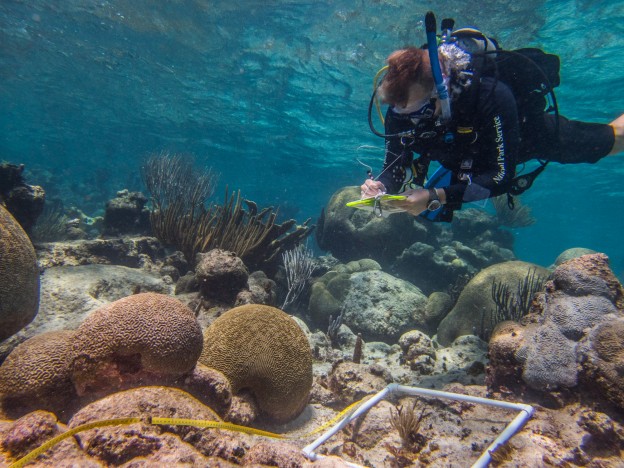


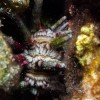

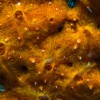
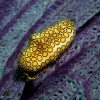
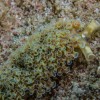



Great blog. Making me want to get back on another dive. Florida Keys and Bonaire were my favorite natural sites so far and diving at Epcot aquarium was another highlight dive with close encounters with sea turtles and sharks